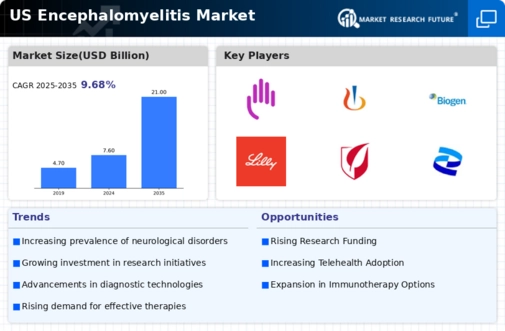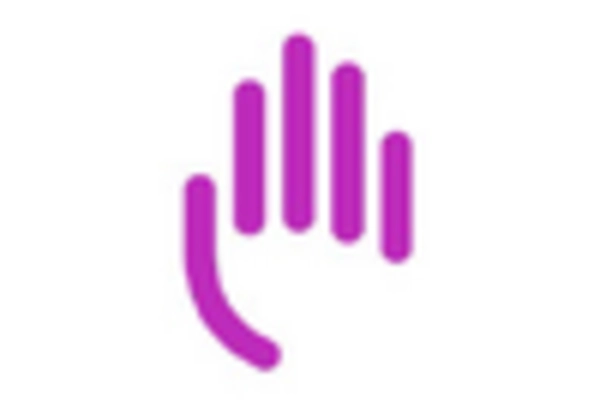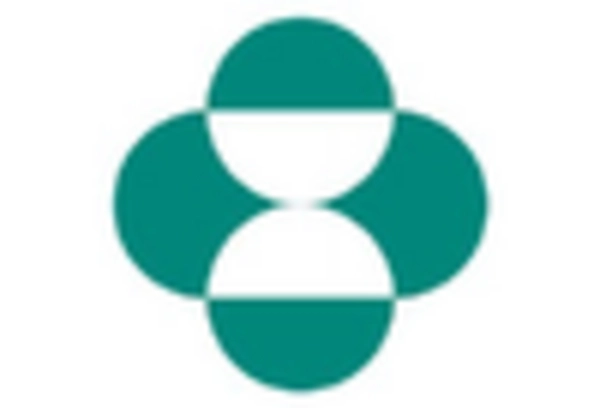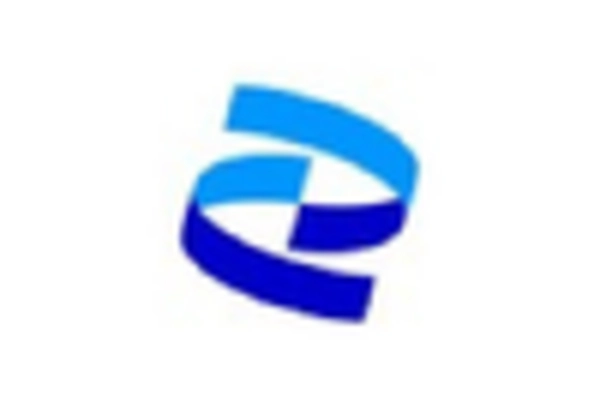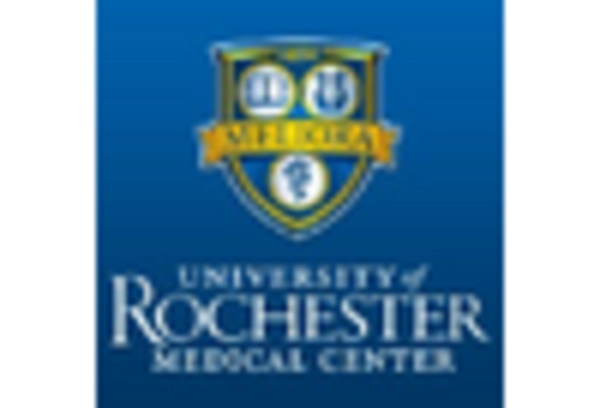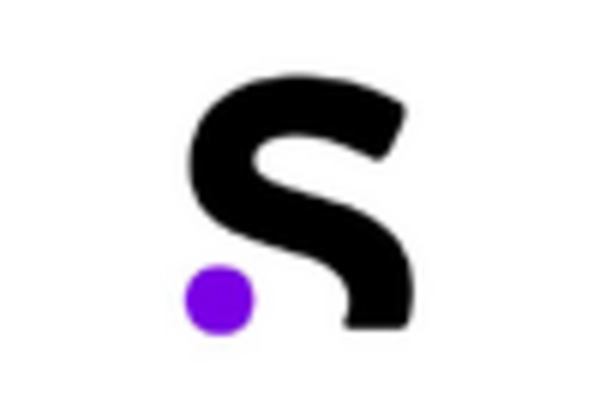Increased Awareness and Education
The growing awareness and education surrounding encephalomyelitis are pivotal drivers for the encephalomyelitis market. Initiatives by healthcare organizations and advocacy groups aim to educate both the public and healthcare professionals about the symptoms, causes, and treatment options for encephalomyelitis. This increased awareness is likely to lead to higher rates of diagnosis and treatment, as individuals become more informed about the condition. Furthermore, educational campaigns can help reduce stigma and encourage patients to seek medical attention sooner. As a result, the demand for therapeutic interventions is expected to rise, thereby expanding the market. The emphasis on awareness and education not only benefits patients but also fosters a more informed healthcare environment, which is essential for the growth of the encephalomyelitis market.
Regulatory Support for New Therapies
Regulatory support for the approval of new therapies is an essential driver for the encephalomyelitis market. The US Food and Drug Administration (FDA) has been increasingly proactive in facilitating the development and approval of innovative treatments for neurological conditions, including encephalomyelitis. Initiatives such as the Breakthrough Therapy Designation and Fast Track designation are designed to expedite the review process for promising therapies. This regulatory environment encourages pharmaceutical companies to invest in research and development, knowing that there is a pathway for quicker market entry. As a result, the number of new therapies entering the market is expected to increase, providing patients with more options for treatment. The supportive regulatory framework is likely to play a crucial role in shaping the future landscape of the encephalomyelitis market.
Rising Incidence of Encephalomyelitis
The increasing incidence of encephalomyelitis in the US is a critical driver for the encephalomyelitis market. Recent data indicates that the prevalence of this condition has been on the rise, with estimates suggesting that approximately 1.5 to 2.5 cases per 100,000 individuals are diagnosed annually. This growing patient population necessitates enhanced treatment options and healthcare resources, thereby stimulating market growth. As healthcare providers seek to address this rising demand, investments in research and development are likely to increase, leading to the introduction of novel therapies and diagnostic tools. Furthermore, the heightened awareness of encephalomyelitis among healthcare professionals and the general public may contribute to earlier diagnosis and intervention, further driving the market. Overall, the rising incidence of encephalomyelitis presents both challenges and opportunities within the encephalomyelitis market.
Advancements in Diagnostic Technologies
Technological advancements in diagnostic tools are significantly influencing the encephalomyelitis market. Innovations such as advanced imaging techniques, biomarker identification, and genetic testing are enhancing the accuracy and speed of encephalomyelitis diagnosis. For instance, the introduction of MRI and CT scans has improved the ability to detect inflammation in the central nervous system, which is crucial for timely treatment. The market for diagnostic tools is projected to grow at a CAGR of around 8% over the next few years, reflecting the increasing demand for precise diagnostic solutions. As healthcare providers adopt these advanced technologies, the overall efficiency of patient management improves, leading to better outcomes. Consequently, the focus on enhancing diagnostic capabilities is likely to propel the growth of the encephalomyelitis market, as early detection plays a vital role in effective treatment.
Growing Investment in Biopharmaceuticals
The surge in investment in biopharmaceuticals is a significant driver of the encephalomyelitis market. With the increasing focus on developing targeted therapies and biologics, pharmaceutical companies are allocating substantial resources to research and development. This trend is particularly evident in the field of encephalomyelitis, where innovative treatments are being explored to address unmet medical needs. The biopharmaceutical sector is projected to reach a market value of over $500 billion by 2026, indicating a robust growth trajectory. As companies invest in clinical trials and product development, the availability of new treatment options for encephalomyelitis is likely to expand, enhancing patient care. This influx of investment not only stimulates market growth but also fosters collaboration between academia and industry, further driving innovation in the encephalomyelitis market.


